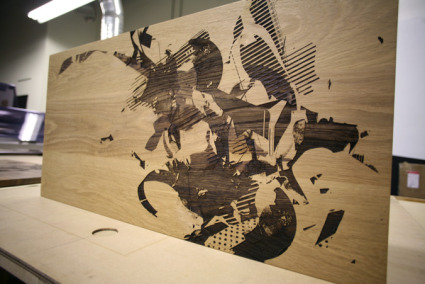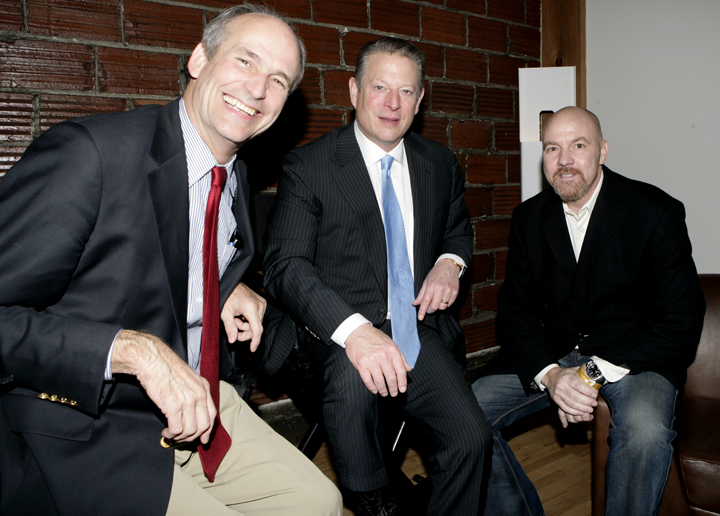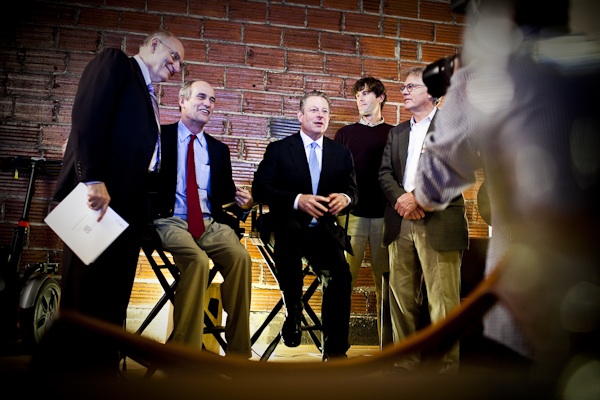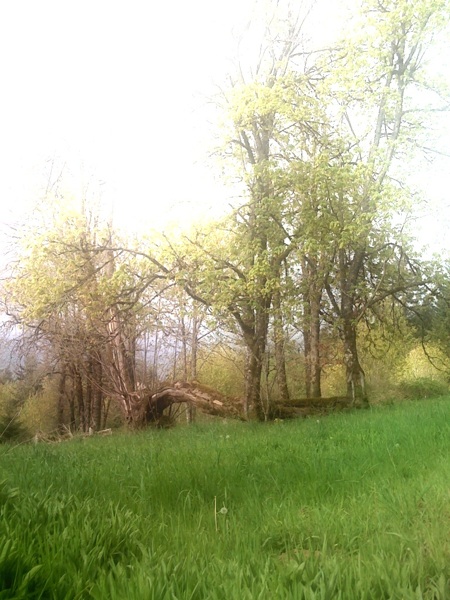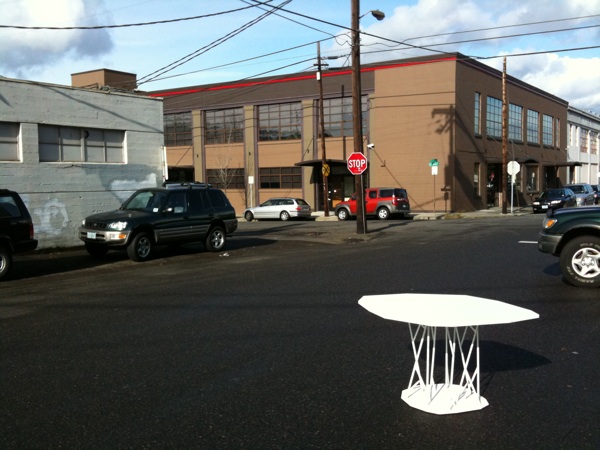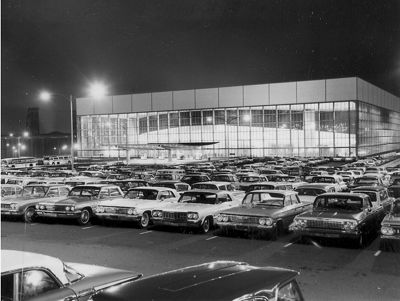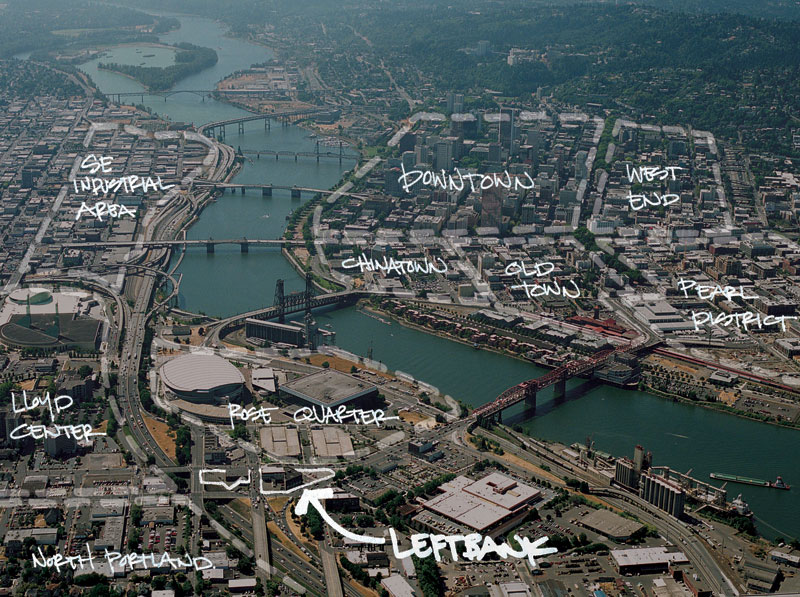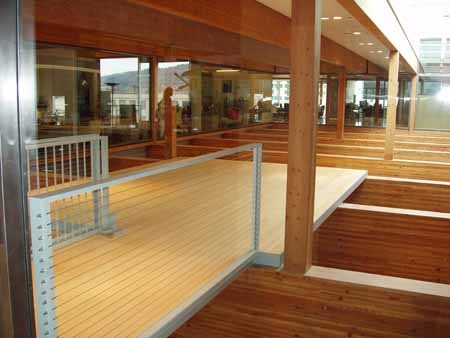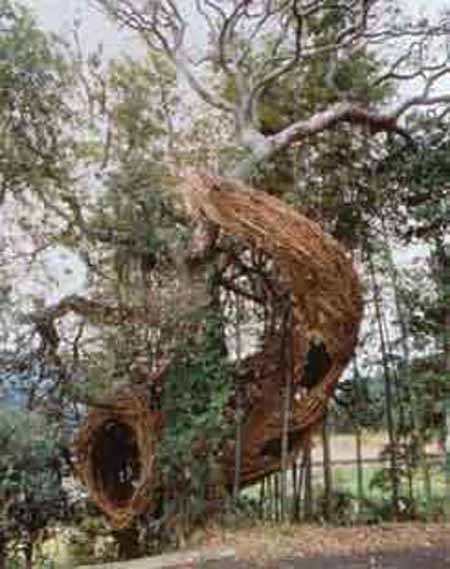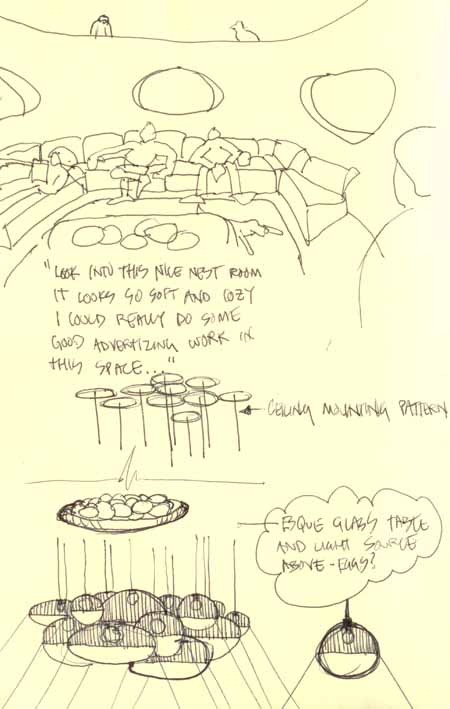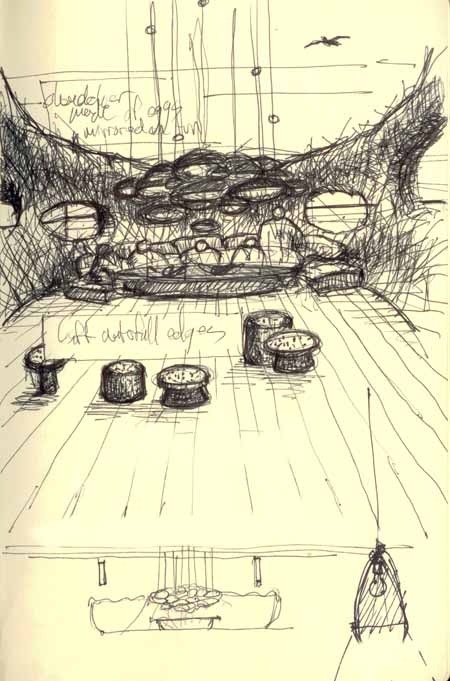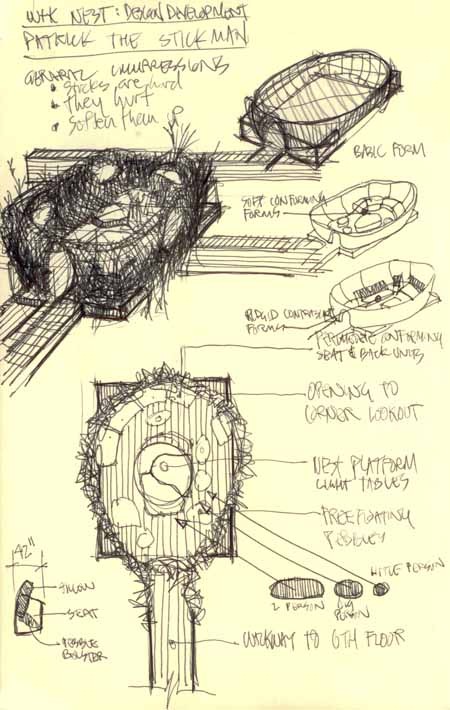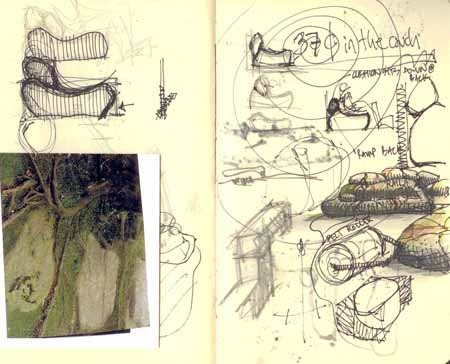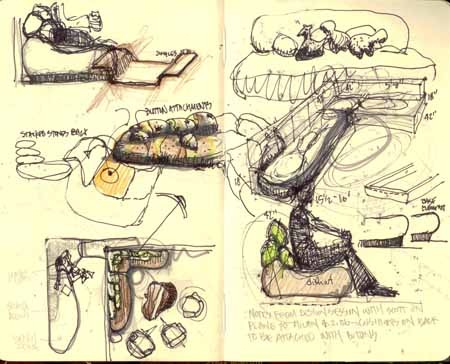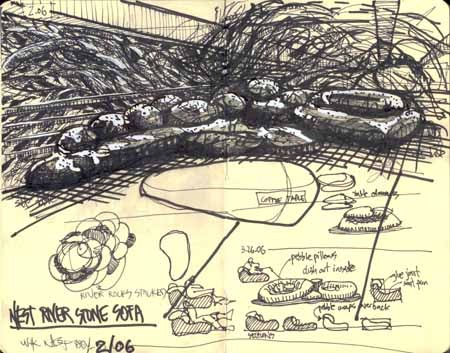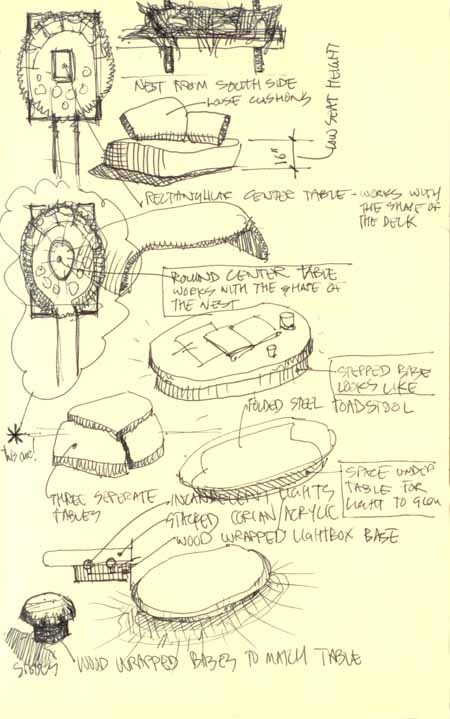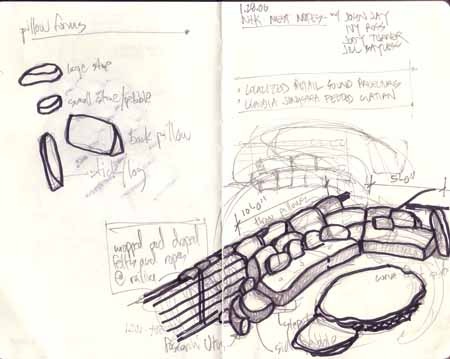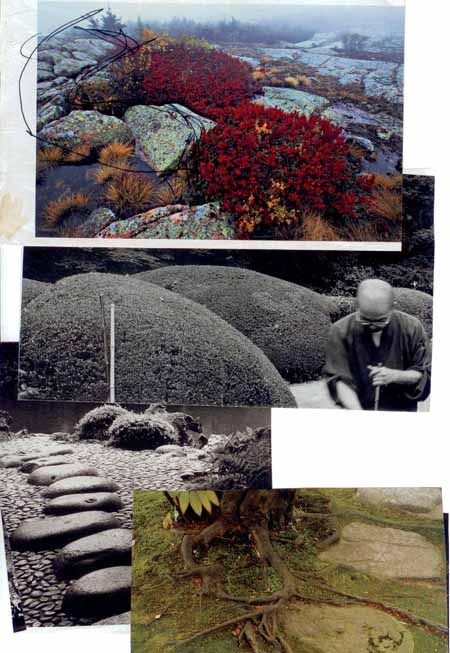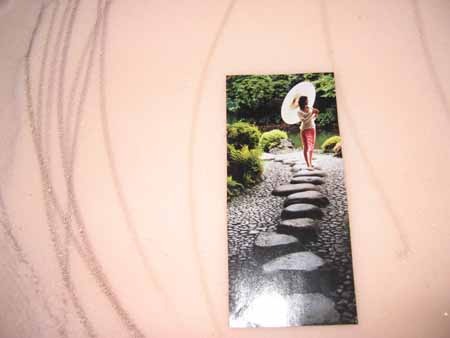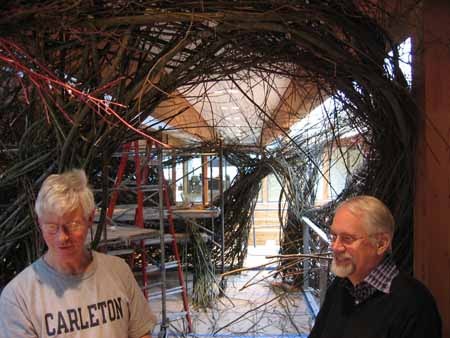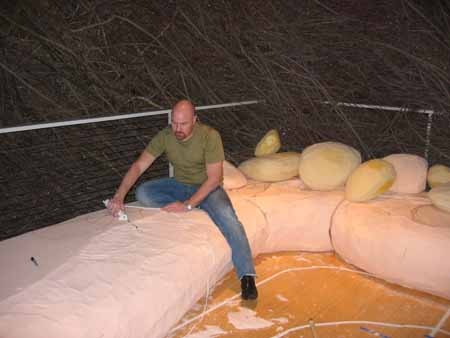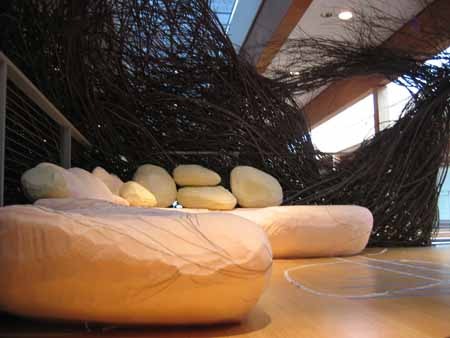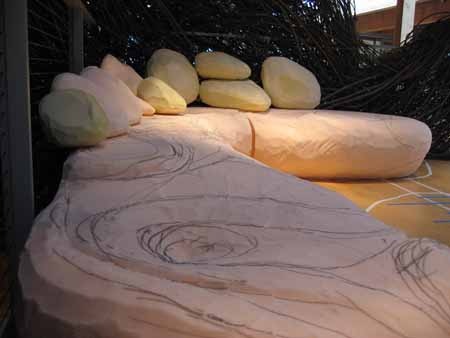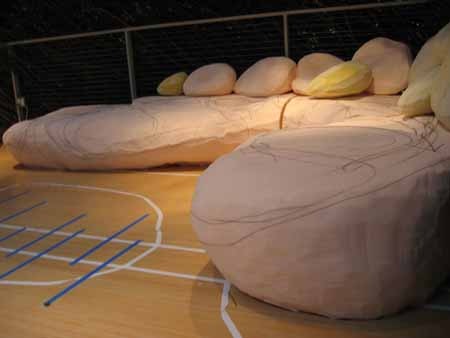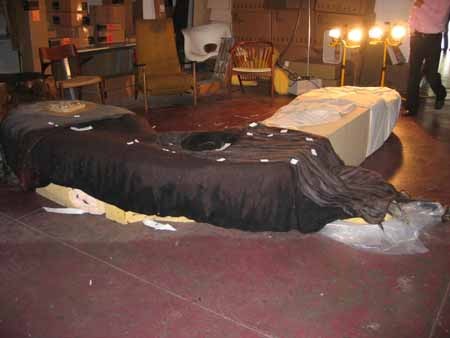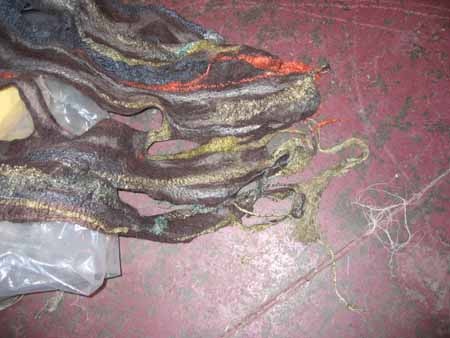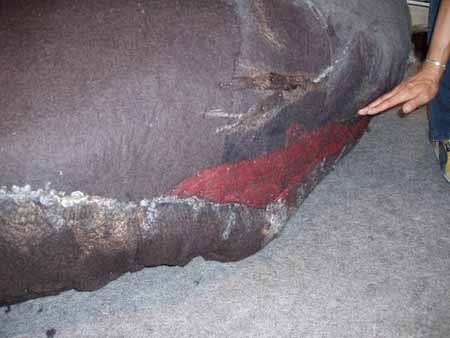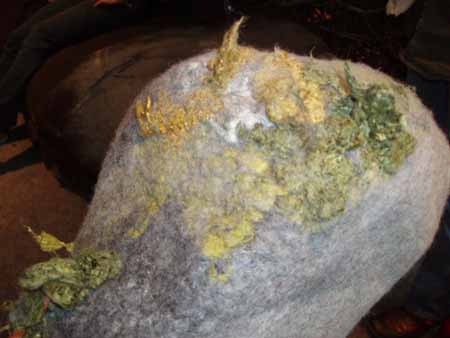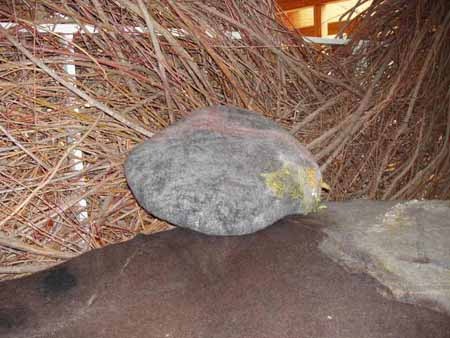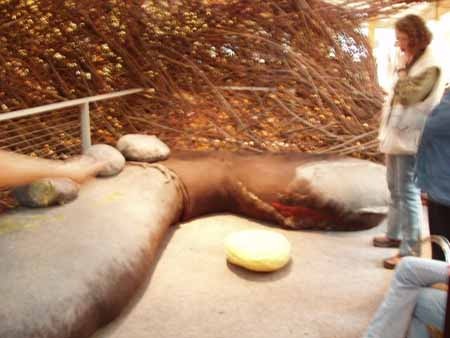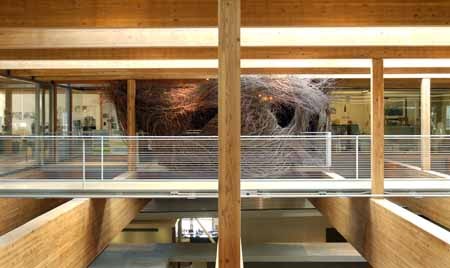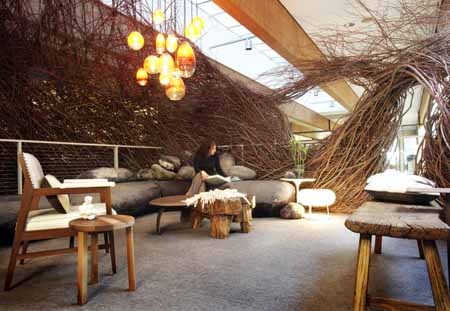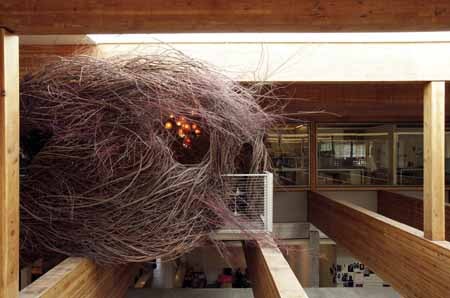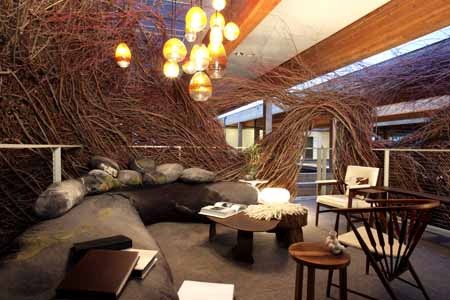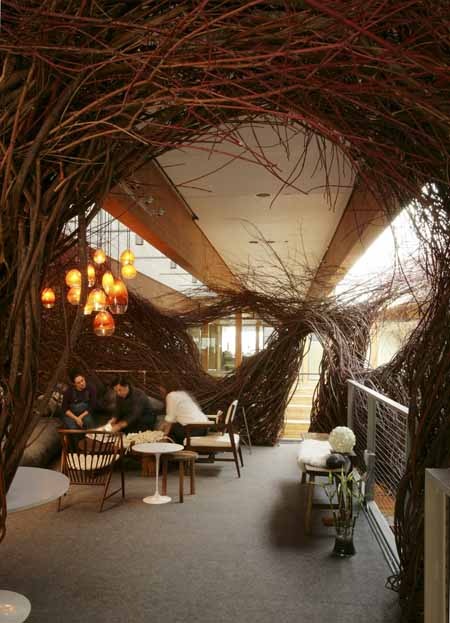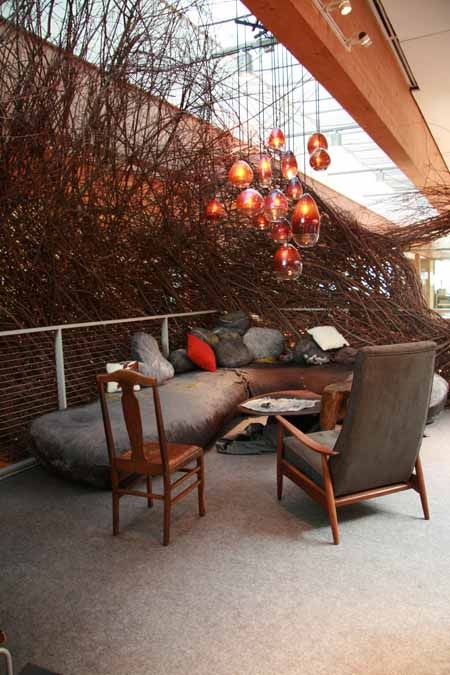
The much loved foundation assemblage project which led to the creation of Earthaware. The Nest was created by Patrick Dougherty and Earthaware founder Owen William Fritts for Dan Wieden of well known ad firm Wieden+Kennedy in Portland, Oregon, USA. Merging willow branches and found materials plus a hand carved soy-foam sofa, custom dyed and rolled wool and mohair felt upholstery, custom blown recycled glass chandelier and other local organics a soft, warm and womb-like space was created. It floats six floors over an open atrium at the heart of the building. The Nest was woven over the course of two weeks working from scaffolding and planks open 50 feet to the concrete below.The willow and alder branches were gathered from unused industrial land along the Willamette River in Portland by W+K interns.
Wieden asked for a river pebble inspired interior of a wave-formed nest conference room. These were the visual images Dougherty and Fritts used to set in motion the creative process. Sketches were made but much of the final results came to being on-site and during the actual making. Wieden put great trust in the artists and the process. The manifestation of that trust speaks for itself.
The furniture and lighting elements respond in form, texture and scale to the woven Nest walls. A team of expert craftspeople were assembled and under the direction of Fritts collectivley designed and created the final interior space during and after the walls went up. The experience of using only found and organic materials, a team of co-creatives and a joyous, supportive client was highly impactful on Fritts. Over the course of the next year and a half the experience slowly transformed Fritts' opinion and attitudes towards his high-end modern architecture, interior design and furniture company Intelligent Design (closed in 2010). The work morphed from crisp Euro-design corporate interiors to open, experiential, co-creative processes oriented projects and birthed the SOLIDCORE/Earthaware experience which eventually led to work educating children the world-over about the environment through the same weaving process as was used on the Nest.


